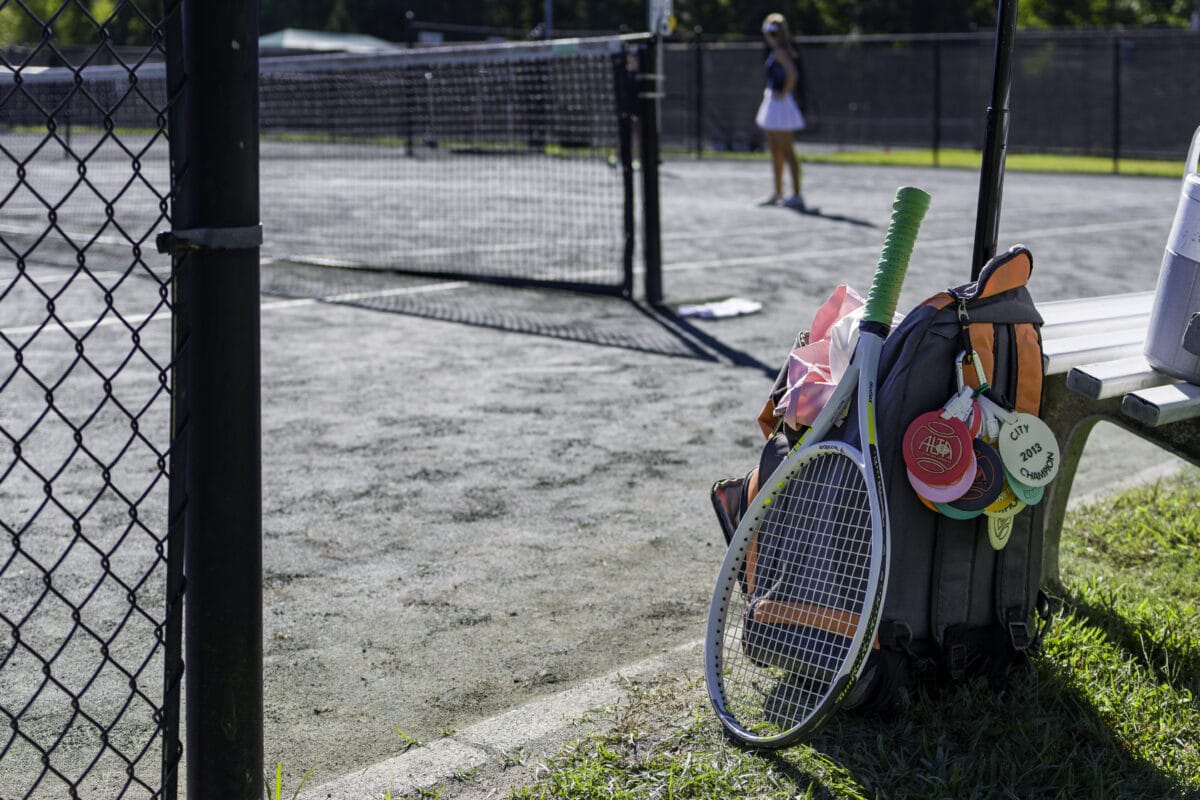
On so many Thursday mornings in metro Atlanta, more than 13,000 women leave their homes and head to compete in a tennis match. And those are just the Thursday numbers. The Atlanta Lawn and Tennis Association (ALTA) hosts an astounding 80,000 members. That whopping number is four times greater than the amount of people screened by TSA on the busiest morning at Hartsfield-Jackson International Airport.
Atlanta can thank Buckhead native and tennis legend Bryan Morel “Bitsy” Grant, Jr. for planting deep-seated tennis roots in our city. Born on Christmas Day in 1910, Bitsy arrived into a tennis-playing family. His father was the southern doubles champion for years. His older brother captained Georgia Tech’s team. But it is his mother, Hattie, who received the credit for engaging Bitsy in the sport. When she took up tennis, she played with him. Bitsy’s father believed that Bitsy was too small to ever become a good player.
Bitsy Grant acquired the name “Bitsy” because of his slight 5 ft. 4 inch build. His physical limitations seemed all too obvious for a sport such as tennis where 6 ft – 6 ft. 3 inches is the norm. However, maybe his particular stature aided in honing his incredible gift of agility. His lack of height and reach were critical, but his perseverance and fighting spirit made him a formidable competitor around the world. Since he could never hit hard, he used the speed of his opponent’s ball to return it with remarkable pace and dexterity. He possessed pinpoint accuracy. His deft use of drop shots from any spot on the court, even behind the baseline, was a significant and effective part of his attacking strategy.
Bitsy Grant played on the University of North Carolina’s 1931 team that won the Southern Conference title. That same year, he was selected as an All-American. He made it to Wimbledon’s quarterfinals twice, played on four U.S. Davis Cup teams, was admitted into Georgia Sports Hall of Fame in 1965, and inducted into the International Tennis Hall of Fame in Newport, Rhode Island, in 1972.
In the 1950’s, the city of Atlanta built the Bitsy Grant Tennis Center off Northside Drive at Atlanta Memorial Park. Although Bitsy is reported to have been embarrassed by the eponymous honor, he played tennis there almost every day of his life. In the 1950’s, 60’s, and 70’s, the tennis center was considered the spot for tennis in the southeast. At one point, the Bitsy Grant Tennis Center became headquarters for the ALTA organization. ALTA has grown to be the largest city tennis league in the world.
Bitsy can be credited for opening the sport to anyone interested in playing. Given his innate stature and adroitness, Bitsy showed us that players did not have to be six feet tall and Herculean to excel in the sport. Nor did a player need to be young. Even at seventy-years-old, Bitsy had a remarkable lob and drop shot.
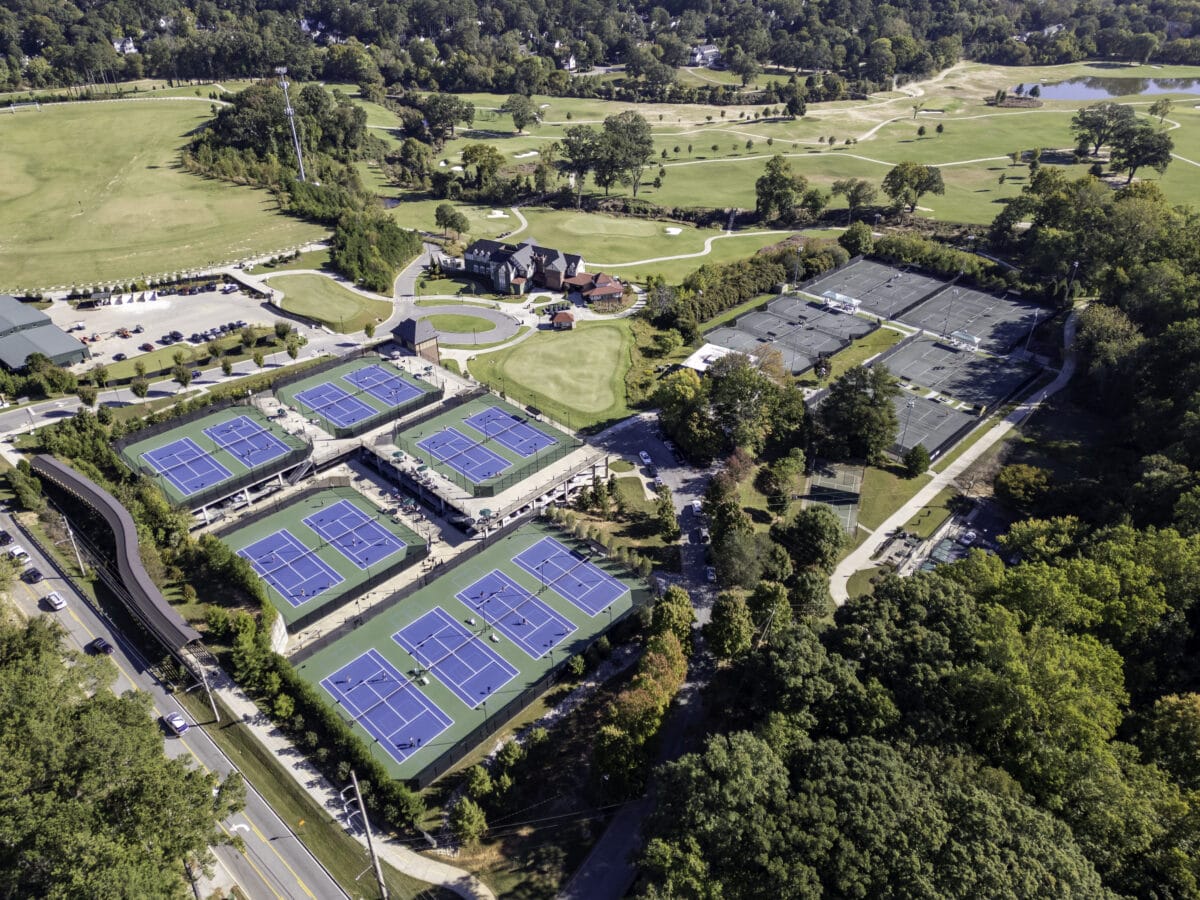
On a particular Thursday one Spring, my ALTA team drove to deep, deep Rockdale County for a match. My partner and I were to play someone named Freddie. Freddie happened to be late. So my partner and I began waiting out the fifteen-minute grace period after which the no-show opponent must forfeit the game, and we walk away with the effortless win. Freddie’s teammates insisted Freddie would show up. At fourteen minutes into the fifteen minute grace period, we heard a rumbling coming from down the street. A petite eighty-one-year-old Freddie rolled up on her ginormous Harley and skidded into a self-made parking spot on the front lawn of this neighborhood’s clubhouse. Freddie puffed on a cigar, waved to us all, and snatched her tennis bag from underneath the bungee cord on her chrome backrest. Freddie ambled her way to us, keeping within her allowed time to be late. Before stepping onto the court, she extinguished her cigar. But stubbing out the stogie only gave way to beer. As Freddie played tennis with her right hand, she drank a PBR with her left hand. Even when she served, somehow she pulled off this feat. This is the honest-to-God southern truth. Needless to say, Freddie whooped us 6-1, 6-0. She got better as she drank.

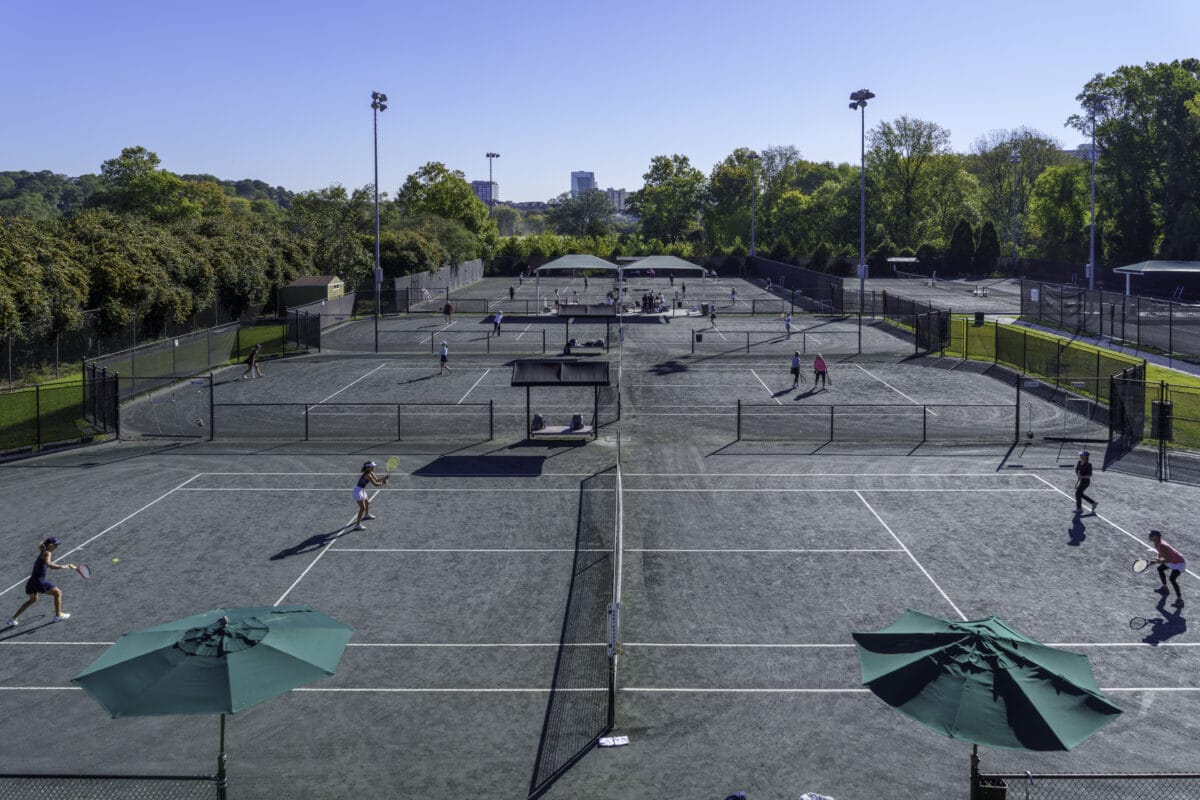
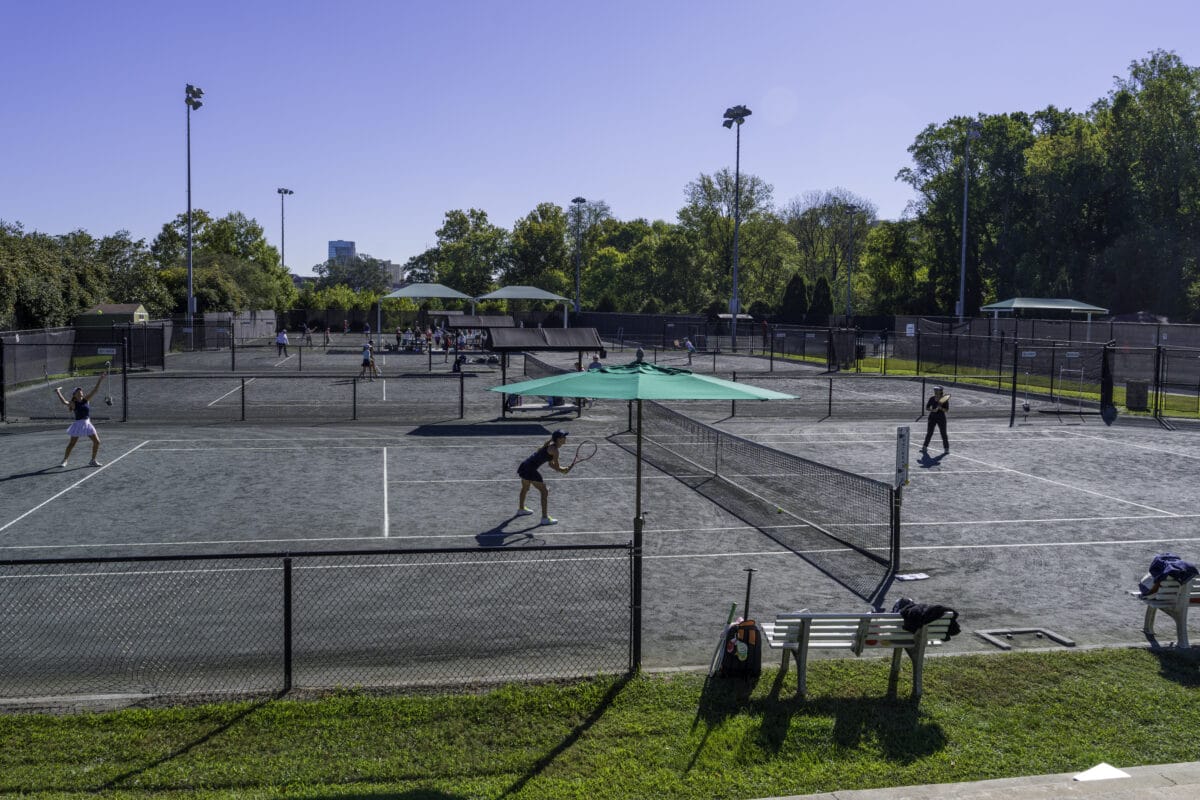
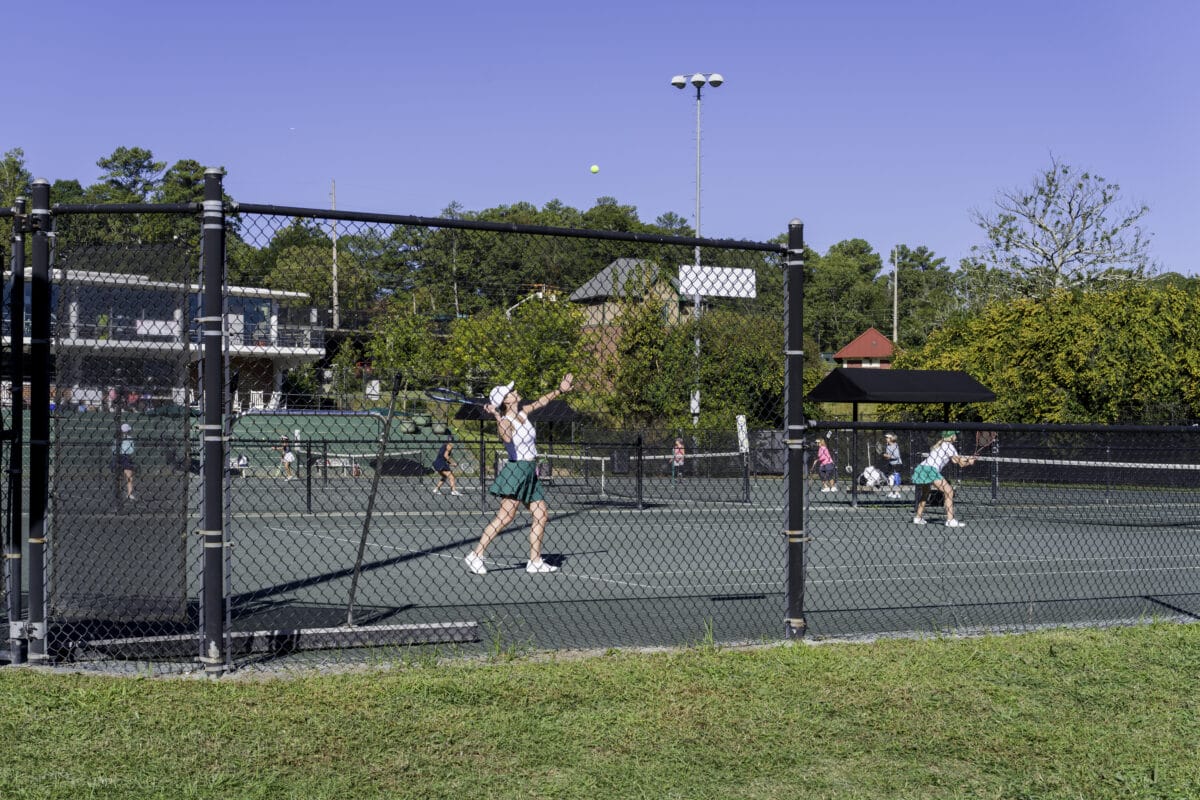

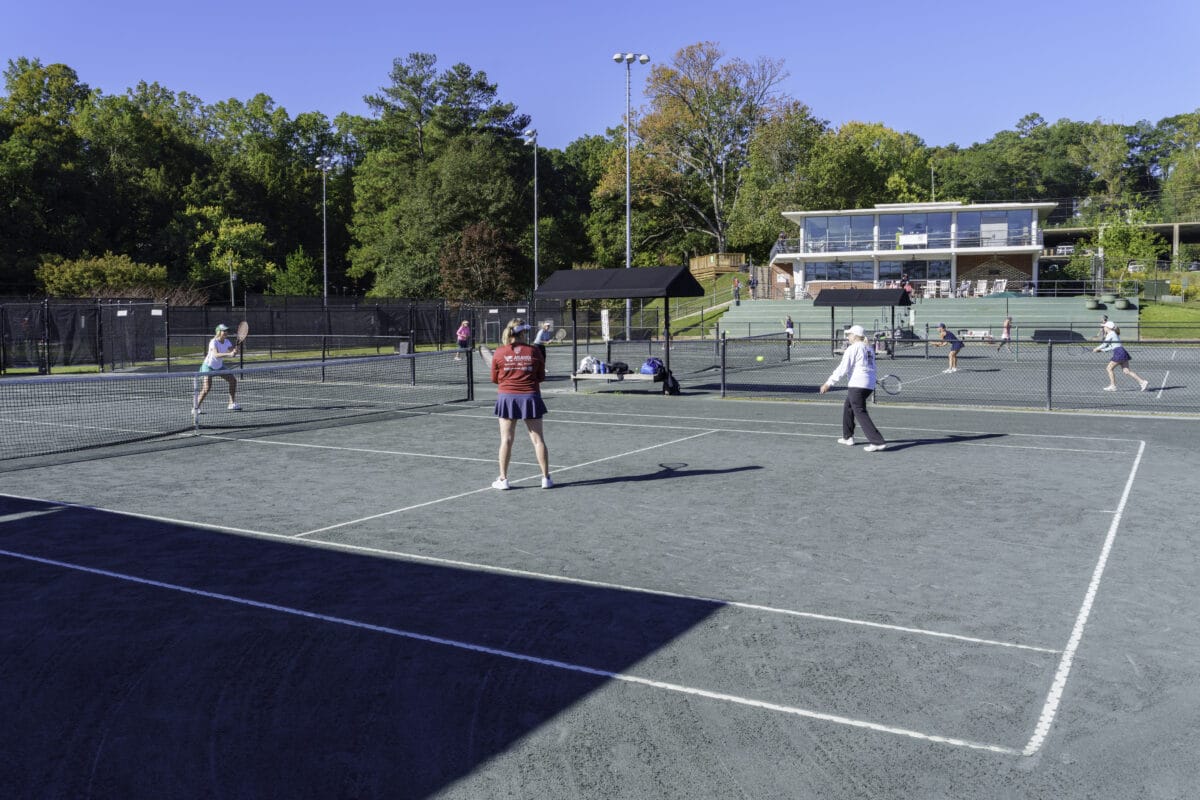
So if every tennis match is not always great fun, why do we keep playing the game? The answer is simple, and I bet Bitsy knew it: Longevity and community.
Fortune magazine’s online health focus, Fortune Well, stated that recreational tennis players live an average of 9.7 years longer than they would have otherwise. Big case in point here, Bitsy Grant almost crested his octogenarian years, even though the life expectancy of a man born in 1910 was a mere 48 years. If you happen to be wondering, playing badminton may extend your life by 6.2 years, swimming by 3.4 years, and jogging by 3.2 years.
For some of us, tennis means laughter and rich friendships. Add the bonus of abundant sunshine. It’s instant camaraderie. Our teammates become our casserole group if life should make an unfortunate turn and we need someone to take over our cooking until life sorts itself back out.
Health and community benefits aside, for so many of us, tennis is a way of life. We do it because we can. We do it because we cannot imagine not doing it.
Little Bitsy was on to something big. Long live Buckhead tennis.
